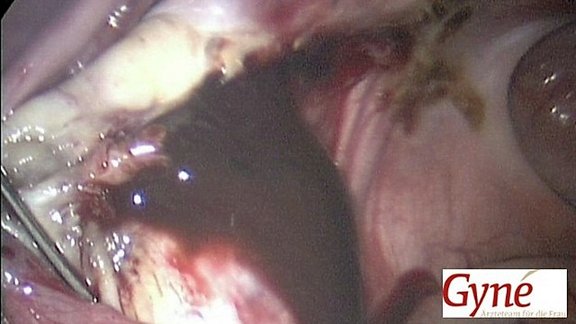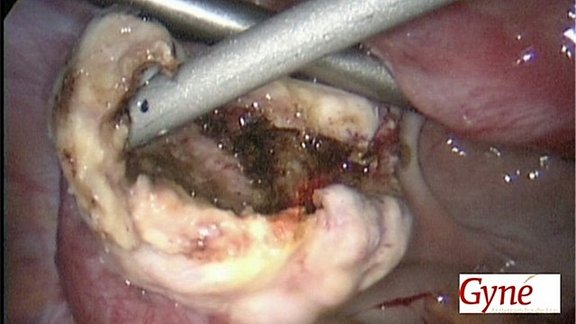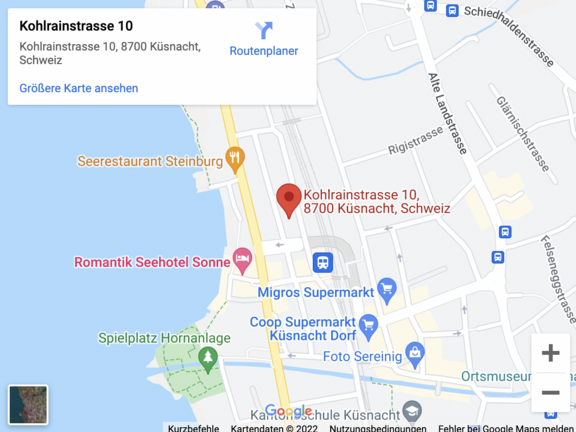Endometriosis Competence Center
Endometriosis is a disease of women, which unfortunately is often diagnosed far too late. Endometriosis can form shortly after the onset of the first menstruation and usually disappears again only during menopause. However, it often occurs between the ages of 20 and 30. It is more common than you think (about 8-10% of all women), it is benign, but it can be very painful.
Since endometriosis is often a reason for infertility (20-50%), it is often not diagnosed until the pregnancy evaluation.
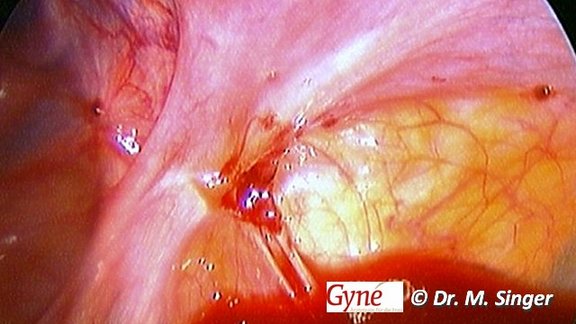
Definition endometriosis
Endometriosis is a disorder in which tissue that is normally formed in the uterus with the normal menstrual cycle and excreted through the vagina with menstruation adheres and grows outside the uterus.
Where to find endometriosis
Endometriosis can settle throughout the abdomen, on the ovaries, fallopian tubes, intestines, retaining ligaments of the uterus, bladder, pelvic wall, and even into the lungs, forming adhesions or so-called choccolate cysts.
In rare cases, it grows into the tissues, called deep endometriosis, and can cause narrowing of the ureters or pressure damage to nerves, in addition to pain. Endometriosis can also form in the uterine wall. This is called adenomyosis. If a lump of endometriosis forms in the uterus, it is called an adenomyoma.
Complaints and symptoms of endometriosis
- Abdominal and back pain, often radiating to the legs and vagina, before and during menstruation.
- Lessening of symptoms with onset or immediately after menstruation.
- Heavy, painful and sometimes irregular menstrual bleeding, especially in adenomyosis.
- Involuntary childlessness.
- Pain during and/or after sexual intercourse.
- Pain during gynecological examinations
- Pain during defecation or urination
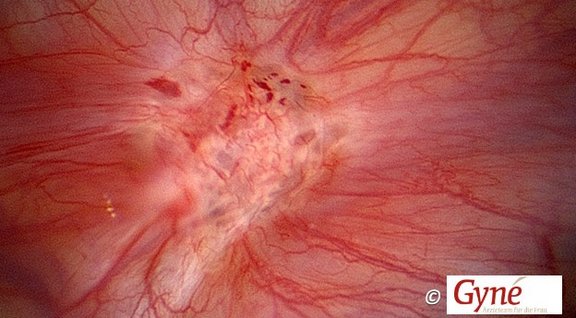
Possibility of diagnosis of endometriosis
The first step in finding the diagnosis of endometriosis is the medical history. The typical complaints as described above are usually the key to the correct diagnosis. The gynecological examination with especially palpation of the pelvis and vaginal ultrasound are the next diagnostic steps. However, fine, small endometriosis lesions in the abdomen can often remain hidden even in this way. The typical endometriosis cysts on the ovaries, the so-called choccolate cysts, are easy to diagnose.
An ultrasound examination of the kidneys is also part of the basic clarification of endometriosis in order to diagnose a congestion of the kidneys caused by a narrowing of the ureter due to endometriosis. In case of complaints of bowel movement possibly even with blood discharge during menstruation also sometimes require a colonoscopy. MRI (magnetic resonance imaging) of the abdomen offers another possibility of diagnosis, which can be helpful especially in the case of deep endometriosis for the question of extension.
After the clinical diagnostic possibilities have been exhausted and depending on the symptoms or problems (especially in the case of unwanted childlessness, infertility), laparoscopy offers the possibility not only to see endometriosis, but also to remove or destroy it (see below).
Treatment options for endometriosis
In the case of mild symptoms, an attempt with alternative therapy methods may be useful (acupuncture, herbal preparations, dietary changes, sports, ...).
If this is not sufficient, conventional painkillers (NSAIDs, such as ibuprofen or Ponstan) and hormonal preparations (birth control pill/progestogens) are used. With the progestogen Dienogest, we have a drug available for endometriosis that is subject to health insurance coverage and often provides significant symptom relief with a small spectrum of side effects. However, all hormone preparations cannot be used against the symptoms of endometriosis if the desire to have children is positive at the same time.
In addition to the conservative therapies for endometriosis described above, surgical treatment options are available. In particular, laparoscopy (keyhole surgery) should be mentioned here.
For laparoscopy, general anesthesia is required. Then the abdomen is filled with gas (CO2). Then different working channels are placed in the abdomen. The camera is then passed through one of them, while the others are used to insert instruments that can be used to operate in the abdomen. An elegant method of destroying endometriosis (especially the superficial one) is vaporization of endometriosis with CO2 laser. During such an operation, the patency of the fallopian tubes can also be checked. This makes sense because patency of the fallopian tubes is a prerequisite for spontaneous pregnancy and because endometriosis often affects the fallopian tubes and can narrow or even completely close them.
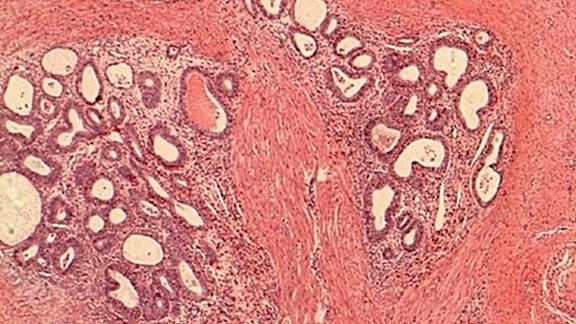
ENDOMETRIOSIS - ALTERNATIVE TREATMENTS
The effectiveness and possible uses of the various conventional medical treatments are limited or only temporary for some patients because of the side effects associated with them. Those affected also often look for therapy-accompanying options to improve their quality of life. Therefore, we also offer complementary therapeutic strategies:
ACUPUNCTURE
Dr. Marion Stirner, MD, a member of our team, is a qualified TCM acupuncturist and can therefore try to help you as an alternative or in addition to medicinal or surgical therapies. For this purpose, various points on the ear and body are treated with acupuncture needles. Normally, 6-10 sessions are planned at intervals of about 1 week, each lasting about 30 minutes. These treatments are fully covered by health insurance.
MICRONUTRIENTS AND PHYTOTHERAPEUTIC APPROACHES
New scientific results show that dietary adjustments, micronutrient supplementation and phytotherapy can also be a promising alternative and complementary strategy: Dietary supplementation with and omega-3 fatty acids shows an anti-inflammatory effect in a dose-dependent manner. It also helps to reduce the intake of arachidonic acid (especially in animal products). An increase in vitamin D levels also has a positive effect on endometriosis pain.
PHYTOTHERAPY (HERBAL SUBSTANCES)
Classic traditional medicinal plants such as lady's mantle, yarrow and monk's pepper as well as curcumin can also alleviate the symptoms of endometriosis.
All these approaches aim to improve the quality of life. The possibility to become active as an affected person also helps to better bear the psychological burden of this diagnosis.
Why an endometriosis competence center?
Endometriosis is a disease with many faces and should therefore be addressed by different specialties. In our case, several specialists work with us to provide the patient with the most comprehensive therapy possible. We have been working intensively in the field of endometriosis for over 2 decades. The cooperation with colleagues from other specialties has been consolidated and proven over the years.
These are among others:
- Prof. Dr. med. Claudio Redaelli (Visceral Surgery, Hirslanden Clinic)
- PD Dr. med. Michael A. Patak (Radiology, Hirslanden Clinic)
- Martin Baumgartner, MD (Urology, Zurich)
- Prof. Bernhard Sauter, MD (Gastroenterology, Hirslanden Clinic)
What we can do for you
If you suspect that you yourself suffer from endometriosis or if you are unsure, please feel free to contact us. From the suspected diagnosis to the confirmed diagnosis as well as the conservative (medicinal, alternative) or surgical treatment of endometriosis, you are in the right place with us.
Contact
GYNÉ LANG
Kohlrainstrasse 10
8700 Küsnacht (Zurich)
Phone +41 44 912 25 25
praxis@gynelang.ch
Opening hours
| Monday | 08.00 - 12.00 | 13.30 - 16.30 |
| Tuesday | 08.00 - 12.00 | 13.30 - 16.30 |
| Wednesday | 08.00 - 15.00 |
| Thursday | 08.00 - 12.00 | 13.30 - 16.30 |
| Friday | 08.00 - 15.00 |
![[Translate to English:] Frauenarzt Zürich [Translate to English:] Frauenarzt Zürich](/fileadmin/sites/gynelang/media/gynelang_logo.png)

